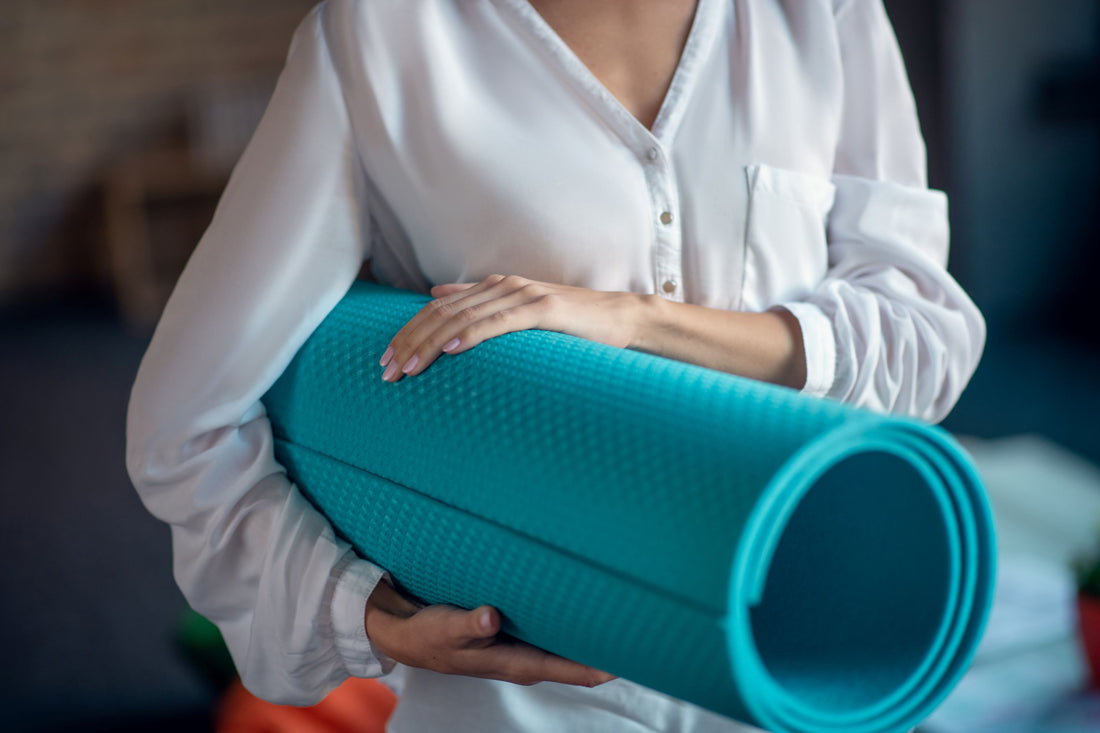The beauty of yoga lies in its accessibility. Unlike many fitness activities that require specific gym equipment or expensive memberships, yoga can be done almost anywhere with minimal gear such as a home gym for instance only using a yoga mat. Most studios provide mats, blocks, and straps for beginners, allowing you to jump right into your practice. However, investing in your own yoga essentials can significantly enhance your experience and make it a more personal journey.
Owning a yoga mat is arguably the most important investment for any yogi, beginner or advanced. Practicing on a slippery towel or a gym mat just won't cut it. Not only can these surfaces lead to injuries, but they can also be frustrating when you can't find proper footing during poses. While using studio mats is perfectly fine, having your own ensures hygiene and allows you to personalize your practice space with a mat that reflects your style and preferences.
4 FEATURES TO TAKE CARE OF WHEN BUYING A GOOD YOGA MAT
Comfort and Cushioning:
Unrolling a good yoga mat is like setting the stage for your practice. It should feel comfortable and supportive, like a güvenli (safe) and relaxing space for your body.
Look for a mat with some cushion, around a quarter inch thick, to protect your joints like your knees, wrists, and spine.
Stability is also important, so avoid anything too soft or squishy. High-density foam or natural rubber mats are popular choices because they're comfy and built to last, making every yoga session a pleasure.
Grip and Traction:
When it comes to yoga mats, finding one with good grip and traction is key. Imagine trying to hold a warrior pose and slipping all over the place – not exactly the zen experience you're looking for!
A good yoga mat should have a non-slip surface to prevent you from sliding around, especially if you tend to get sweaty during your practice.
Look for mats with textured surfaces or those made from sticky materials like PVC or TPE. These types of mats will provide excellent grip and stability even during challenging poses like downward-facing dog. With a grippy mat, you can focus on your breath, your form, and all the good vibes that come with your yoga practice.
Durability and Longevity:
Having a good mat is like having a good pair of shoes for running - it makes all the difference. If you're planning on sticking with your practice, investing in a durable mat is a smart move.
Look for one made from high-quality materials that can take a beating without losing its shape or support. Closed-cell mats are especially great because they're easy to keep clean and won't get all sweaty and smelly. Plus, getting a mat with reinforced edges will help prevent it from fraying or falling apart over time.
Size and Portability:
Choosing the right yoga mat goes beyond finding one with pretty colors or a trendy design. An important factor to consider is the size and portability, especially if you plan to take your practice on the go or have limited space at home.
Standard yoga mats are typically around 6 feet long and 2 feet wide, but taller folks might need a longer mat for full body stretches.
There are also wider options for those who prefer more space for their poses. If portability is key, look for lightweight mats that roll up compactly and are easy to carry.
CONCLUSION
In conclusion, the "perfect" yoga mat depends on your individual needs and preferences. With a variety of options available, there's a yoga mat out there waiting at PROSPORTSAE to support you on your journey to inner peace and physical well-being. So, grab your mat, roll it out, and find your flow!

